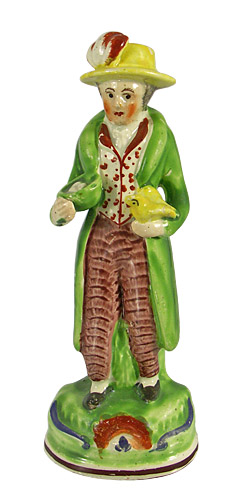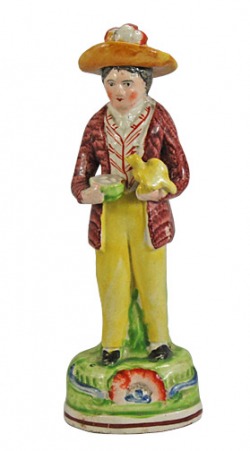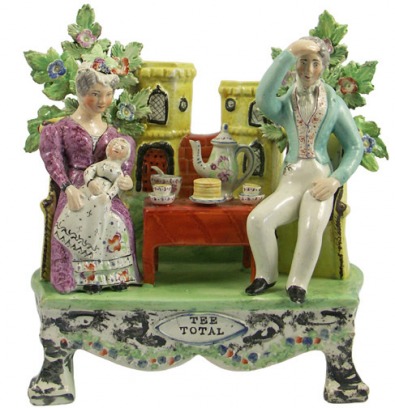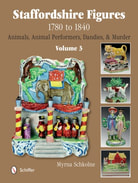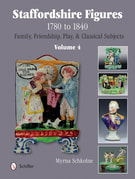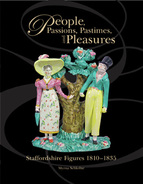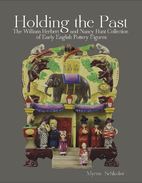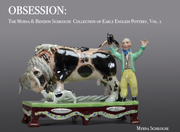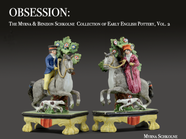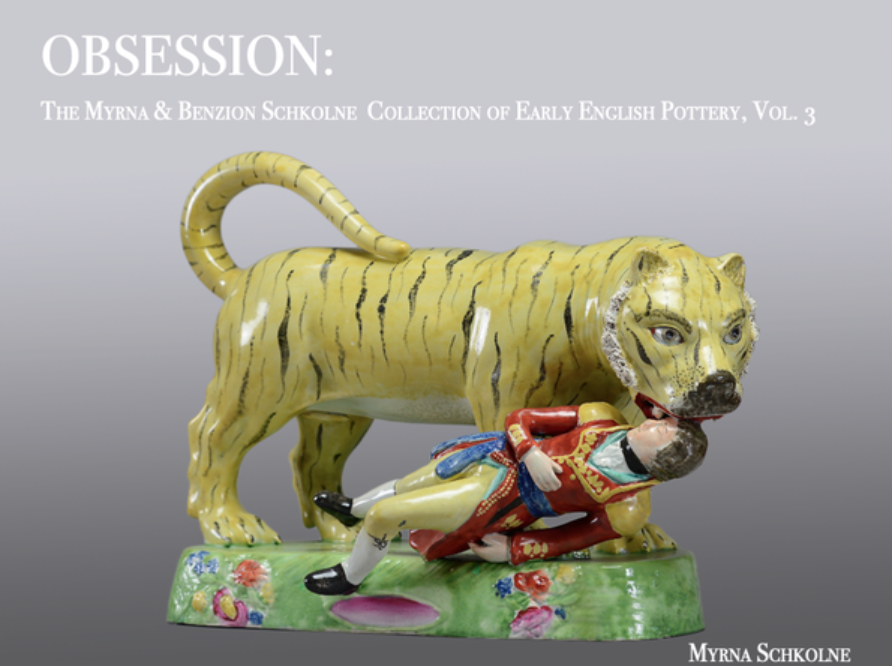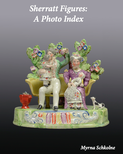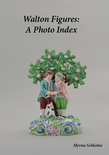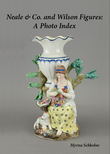|
As I did my run through of eBay today, I was perturbed by several suspicious figures, all appearing quite perfect. Remember an apparently perfect figure may be a well restored figure. A perfect bocage can be quite modern! Always check out the most perfect figure against what the form should look like. Restorers are very clever with their hands, but not always so clever with their minds. It is easy to make a figure look good again, but is the restoration correct? Does Venus hold grapes or a dove? Does Diana wear an odd little crown or a floral garland on her head? Often sellers are well intentioned but just don't know they are looking at modern restoration. I have a large photo archive and am always happy to share, so if in doubt please just ask!
0 Comments
I know a collector with the most amazing collection of early Staffordshire figures--probably the largest collection in the world. Her favorite figure is about two inches tall, not very well modelled or overly decorated, but it just nestles comfortably in her hand. This figure she intends taking with her if she ever has to move into the final stages of retirment living. I don't find her choice particularly odd, because the longer I collect the more I love little figures. No disrespect to those large masterpieces the potters wrought. I gaze at them in endless awe. But being awed can be tiring...and little figures are so comforting, so tactile. My "Green Man", as I call the figure above, is not quite a tiny figure, but he is small. No more than 6 inches. I fell in love with him and my friend Nick Burton bought him for me a good while ago. I love the color, his sweet face, and the quaintness of the long coat on such a youthful form. A child dressed to look like a little old man. I can hold this figure in my hand and feel it warm to my touch as it brings a smile to my face. I can even give it a good squeeze--and all becomes right with my day. About two years after buying my Green Man, I found the figure below. The similarities and differences intrigued me. Clearly, this figure has been made by the same factory and from a very similar mold. Just some change to the length of the coat and the hat brim. Both figure forms are quite uncommon, although I have seen another example of the boy with the short coat. He is lovely, but the Green Man owns a piece of my heart.
Figures such as these add great charm to any collection. And they can be very affordable, despite their rarity. As I always remind beginning collectors, you can get a great little figure for less than the price of a night in a NY hotel. So keep your eyes open! Ah...I can hear you sigh at the charm of this ever-popular Staffordshire figure group. The distinctive base alone tells us its in the "Sherratt style". Seems that the potbank we dub "Sherratt" was the only one to make this complex figure group.
The story of the early teetotal movement in the UK is fascinating. In the 1800s, England was seemingly in a drunken stupor. Good drinking water was scarce, and beer the safest, most palatable drink. Children drank beer, hospitals give it to patients, and workers received daily quotas. In 1827, Robert Macnish documented that the average worker consumed anywhere from 7 pints to 2 gallons of beer a day. Beer was bad, but gin was far worse and its use was spreading. Gin drinking was addictive and carried to excess it led to illness, poverty, violence, and death.The temperance movement first got going in an attempt to pursuade people to abandon gin and other spirits. Instead, they were encourage to drink a LOT more beer. The temperance movement of the 1820s was sponsored by middle-class do-gooders, and their fine intentions were aimed at helping the working man stay sober. Well, it didn't take long for working folk to realize that drinking more beer was NOT keeping them sober. Drastic abstinence was needed, so the TeeTotal Movement was born around 1830. Initially a working-class movement, it encouraged abandoning ALL alcohol. In days when a ruddy complexion equated with good health, some feared that going teetotal would be life threatening! Joseph Lawson, a Yorkshireman who kept a diary, noted that he did not expect the first teetotalers to survive. But they did, and the teetotal movement took hold. I expect that on middle class mantels TEE TOTAL groups were virtuous displays of support for abstinence. Today, the groups are increasingly difficult to find. They simply ooze charm. Who can resist the smug wife clutching her baby while she presides over the tea table? After all, what was a more proper drink than tea? And how about her poor husband clutching his head. A hangover? Or is he afraid that without his beer he will not survive? Fascinating Factoids The origin of “teetotal” is controversial, and the date that the word came into the English language is significant to Staffordshire collectors because it could help date titled Teetotal figure groups. Theories include:
|
Archives
February 2024
All material on this website is protected by copyright law. You may link to this site from your site, but please contact Myrna if you wish to reproduce any of this material elsewhere. |
